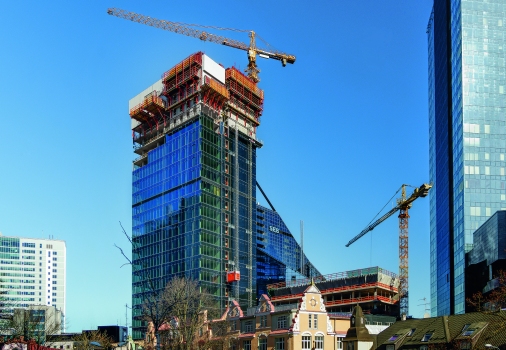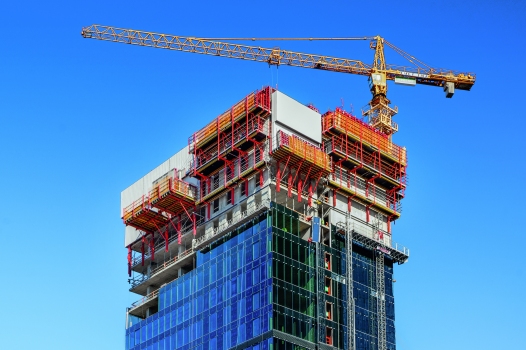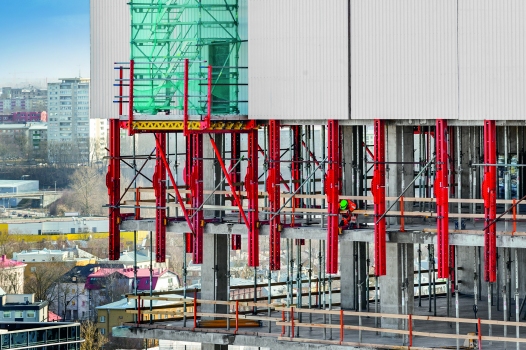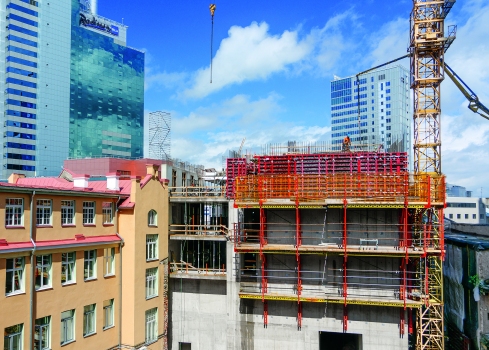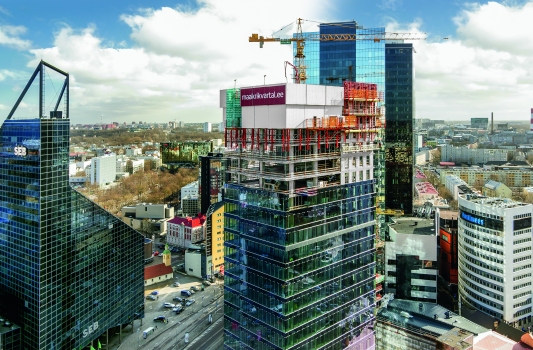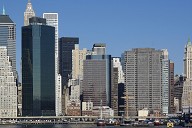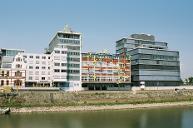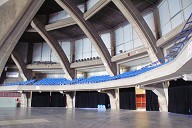Maakri-Kvartal business complex in Tallinn, Estonia
Seven buildings characterize the Maakri-Kvartal complex that is currently being built in Estonia's capital. The project comprises new high-rise buildings as well as restored architectural monuments and connects the historical heart with the newer district of Tallinn. Centrally located, the new business complex will offer a total area of 36,000 m² after completion.
Media
In addition to office and commercial space, a conference centre along with several restaurants with corresponding outdoor areas is being realized – all with an unbeatable view of the city and the sea. Three very modern, newly constructed high-rise buildings will eventually completely merge with four historical structures from the early 20th century that are currently being extensively renovated and expanded. The whole complex will subsequently present a very harmonious overall appearance.
The Maakri Quarter
For the planning of the Maakri Quarter, renowned architect Rasmus Tamme was tasked to seamlessly integrate the new buildings into the historical environment. The new structures are characterized by a strong, clear, minimalistic geometry; the architect made no attempt to copy the form of the historical buildings. Nevertheless, the past, present, and future came together to form a coherent whole.
The 110 m high multi-storey building is a new landmark in Tallinn. Up to now, the Swissôtel twin towers and Tornimäe 5 structure have dominated the skyline of the city. In future, the new 30-storey tower will complement this silhouette. Open glass fronts, a well-designed square as access to the new Maakri Quarter and inter-connecting inner courtyards make the complex a particularly successful mix of old and new.
110 m high building with 30 floors
The highest of the three new structures within the Maakri complex has 30 floors and thus is over 100 m high. For the first time in a decade, a high-rise building is being built in Tallinn that has exceeded this height. As the new landmark of the city, the building combines tradition and modernity.
The biggest challenge for the construction team was to maintain the very tight construction schedule while, at the same time, accommodating difficult weather conditions and limited crane and storage capacities in the densely built-up urban area. Furthermore, it was necessary to fulfil the high quality requirements of the client for the concreting work.
For the structural work, PERI engineers worked closely together with the site management in order to develop a comprehensive overall concept. The climbing formwork solution greatly contributed, in particular, to minimizing crane utilization as well as accelerating the construction progress. The rail climbing system was combined with the panel formwork to form corresponding climbing units. Through the rail-guided climbing procedure, these units were firmly connected to the structure at all times which made climbing fast and safe even during strong winds. The units were lifted to the next section using the mobile climbing hydraulics in 50 cm increments.
The wall formwork was positioned on a carriage and retracted by up to 90 cm for the reinforcement work. In addition, a variant of the rail climbing formwork was used as an enclosure and anti-fall protection for the gap-free continuous closure of the floors of the shell construction.
The panel formwork was used not only on the climbing formwork but also for various other wall areas. With element heights of up to 3.30 m, together with the tie technology with ties installed from one side, valuable working time could be saved.
As the tie technology could be operated from one side only, no work was necessary on the setting side. In the process, the wingnut was fixed just once at the start of operations to the primary formwork and then the tie could be screwed in through the closing formwork into the wingnut. Thus, the anchor could be operated by one person and from one side during each forming operation. The conical-shaped tie rod did not require any spacer tube and cone.
Last but not least, the wall formwork system ensured a clean concrete finish without any impressions from unused tie points. Furthermore, the centrally arranged tie points produced a regular joint and anchor pattern both horizontally and vertically. As a result, the construction team was able to meet the high requirements regarding the very best quality concrete surfaces.
Structure Types
- About this
data sheet - Product-ID
7524 - Published on:
22/10/2017 - Last updated on:
22/10/2017

